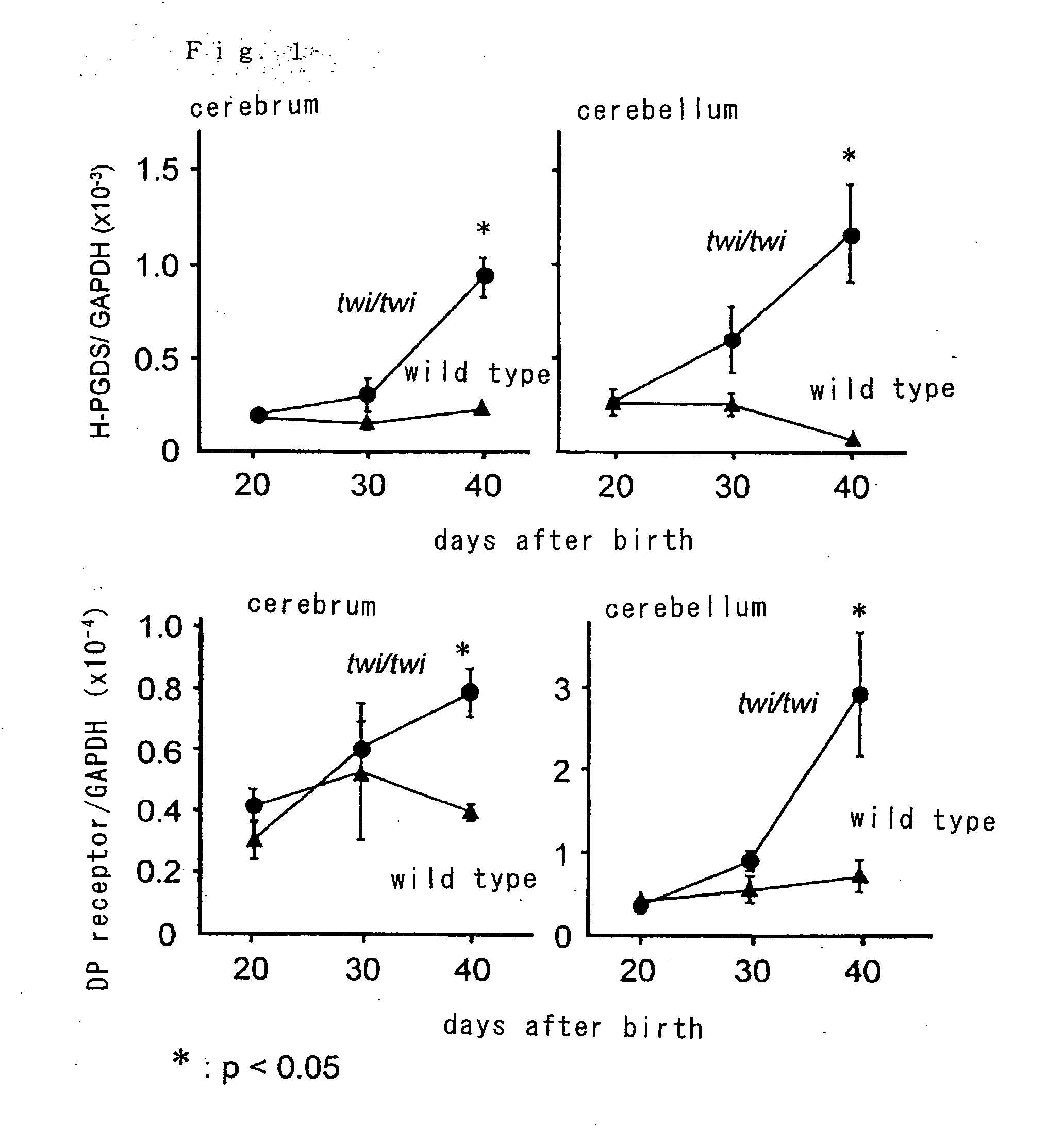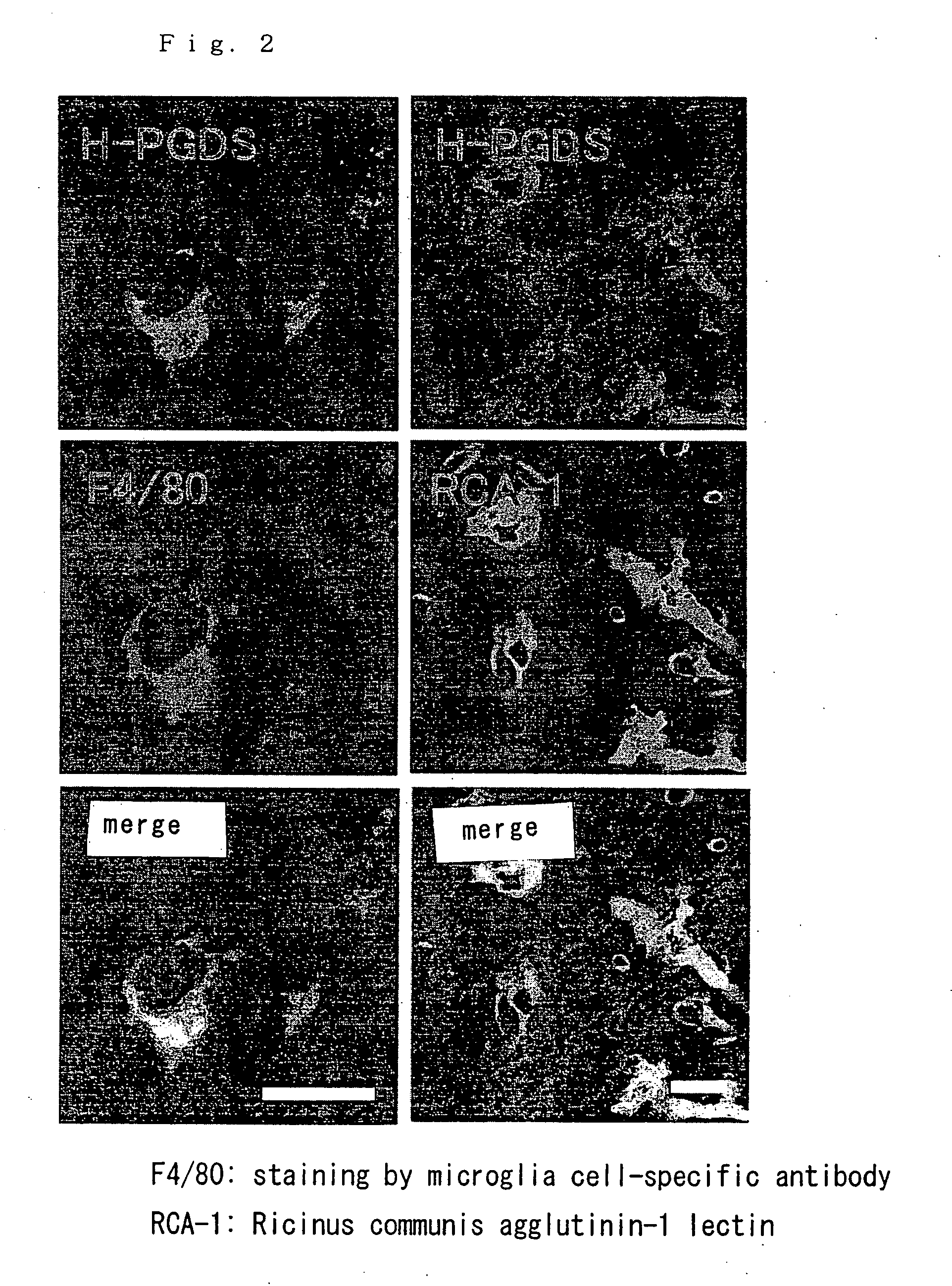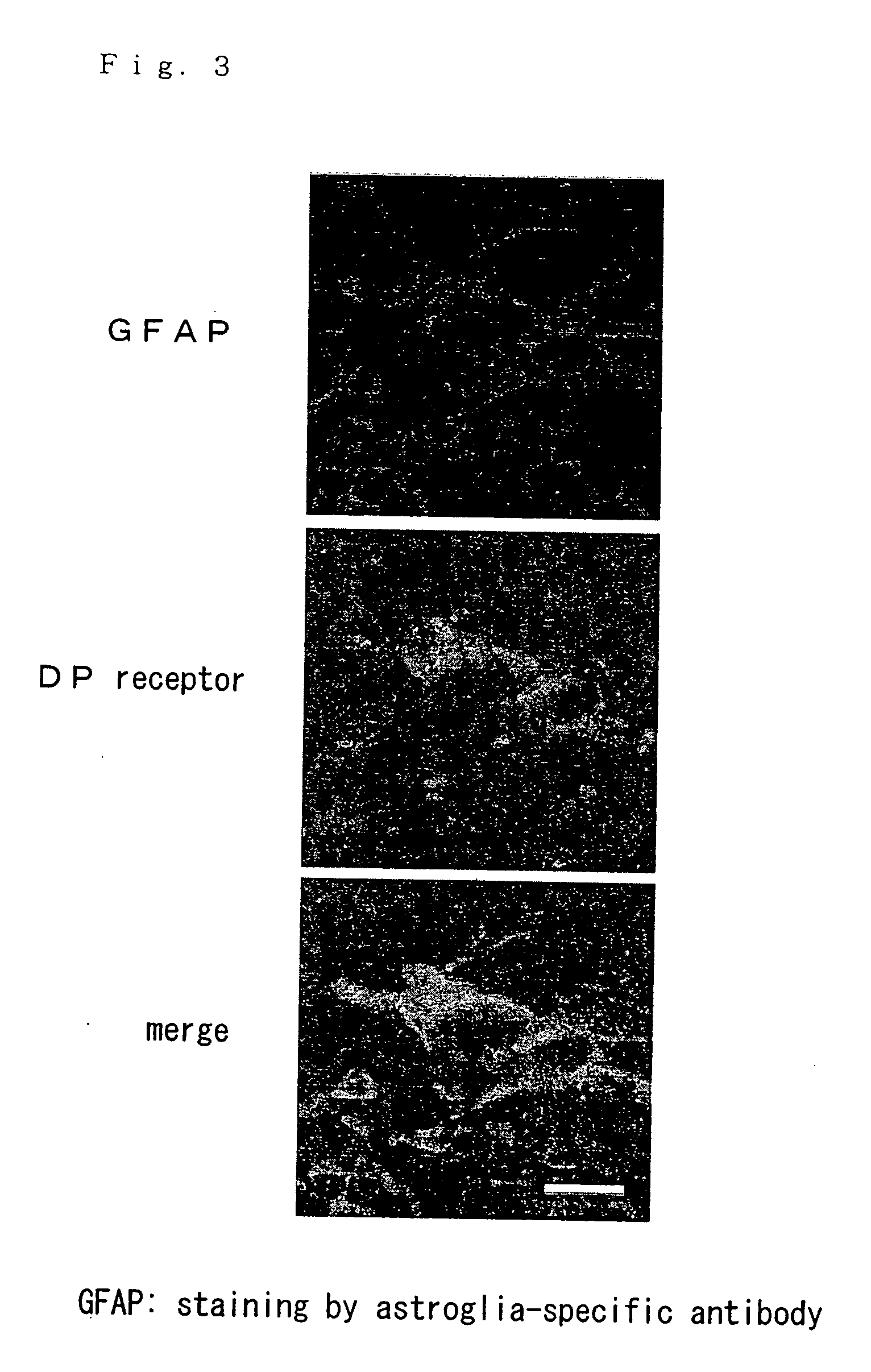Drugs for improving the prognosis of brain injury and a method of screening the same
a brain injury and drug technology, applied in the field of brain injury drugs, can solve the problems of lowering cardiopulmonary function and immunological function, and achieve the effect of improving prognosis and suppressing tissue injury
- Summary
- Abstract
- Description
- Claims
- Application Information
AI Technical Summary
Benefits of technology
Problems solved by technology
Method used
Image
Examples
preparation example 1
Preparation of a Human Hematopoietic Prostaglandin D Synthase Over-Expressing Transgenic Mouse
[0073] A human hematopoietic prostaglandin D synthase over-expressing transgenic mouse was prepared according to a method disclosed in WO 01 / 24627.
[0074] From a cDNA library prepared from mRNA of human cells, cDNA of human h-PGDS (Eur. J. Biochem. 267:3315-3322, 2000; GenBank Accession No. NM-014485) was cloned using cDNA of rat H-PGDS gene (Cell 90:1085-10975, 1997; GenBank Accession No. D 82071) as a probe. Then, cDNA of human H-PGDS was inserted into a cloning site (Sal I / Not I) of a vector pCAGGS (Gene 108:193-199 (1991)) to construct a transducing vector. FIG. 18 is a construction of transgene in this transducing vector. The transgene has a CMV enhancer and a chitin β-actin promoter at the upper stream of H-PGDS cDNA and, when it is transduced into chromosome of a mouse, H-PGDS mRNA is over-expressed by the action of those enhancer and promoter. The transducing vector was infused int...
preparation example 2
Preparation of a Hematopoietic Prostaglandin D Synthase Knockout (H-PGDS KO) Mouse
[0075] A hematopoietic prostaglandin D synthase knockout mouse was prepared according to a method taught in the Japanese Patent Application No. 2002 / 18666 filed on Jan. 28, 2002.
[0076] A region including exon II (protein translation initiation region of H-PGDS) of known mouse H-PGDS gene was substituted with Neor gene, then a mutant sequence was prepared by integration of thymidine kinase gene of herpes virus (HSV-tk gene) into about 7 Kb upstream of H-PGDS gene and the mutant sequence was integrated into a vector to prepare a targeting vector (refer to FIG. 19).
[0077] Targeting vector was transduced at the rate of 48 μg / ml into a non-differentiated incubated ES cells (1.2×107 cells) by electroporation to prepare ES cells into which gene was transduced. The cells were sown on a plate, G418 and ganciclovir were added to the medium after 2 days and incubation was conducted for 7 days more to prepare c...
example 1
Transduction of Hematopoietic Prostaglandin D Synthase and DP Receptor in Hereditary Demyelinating Disease
[0081] Changes in mRNA of H-PGDS and DP receptor as a result of demyelination were quantified by a quantitative RT-PCR method using a model mouse Twitcher of human Krabbe diseases which is a disease where galactosylceramidase is deficient (Kobayashi T, et al., Brain Res., 202:479-483, 1980; Duchen L W, et al., Brain, 103:695-710, 1980; Sakai N, et al., J. Neurochem., 66:1118-1124, 1996; Taniike M et al., J. Neuropathol. Exp. Neurol., 58:644-653, 1999) (refer to FIG. 1). Expression of mRNA of both H-PGDS and DP receptor increased as a result of demyelination.
[0082] It was identified by an immunolohistochemical staining that H-PGDS was expressed in microglia cells, macrophage cells and ameboid cells accumulated in local tissues where demyelination progressed (refer to FIG. 2). On the other hand, it was identified that DP receptor was expressed in activated astroglia cells distri...
PUM
| Property | Measurement | Unit |
|---|---|---|
| temperature | aaaaa | aaaaa |
| body weight | aaaaa | aaaaa |
| body weight | aaaaa | aaaaa |
Abstract
Description
Claims
Application Information
 Login to View More
Login to View More - R&D
- Intellectual Property
- Life Sciences
- Materials
- Tech Scout
- Unparalleled Data Quality
- Higher Quality Content
- 60% Fewer Hallucinations
Browse by: Latest US Patents, China's latest patents, Technical Efficacy Thesaurus, Application Domain, Technology Topic, Popular Technical Reports.
© 2025 PatSnap. All rights reserved.Legal|Privacy policy|Modern Slavery Act Transparency Statement|Sitemap|About US| Contact US: help@patsnap.com



